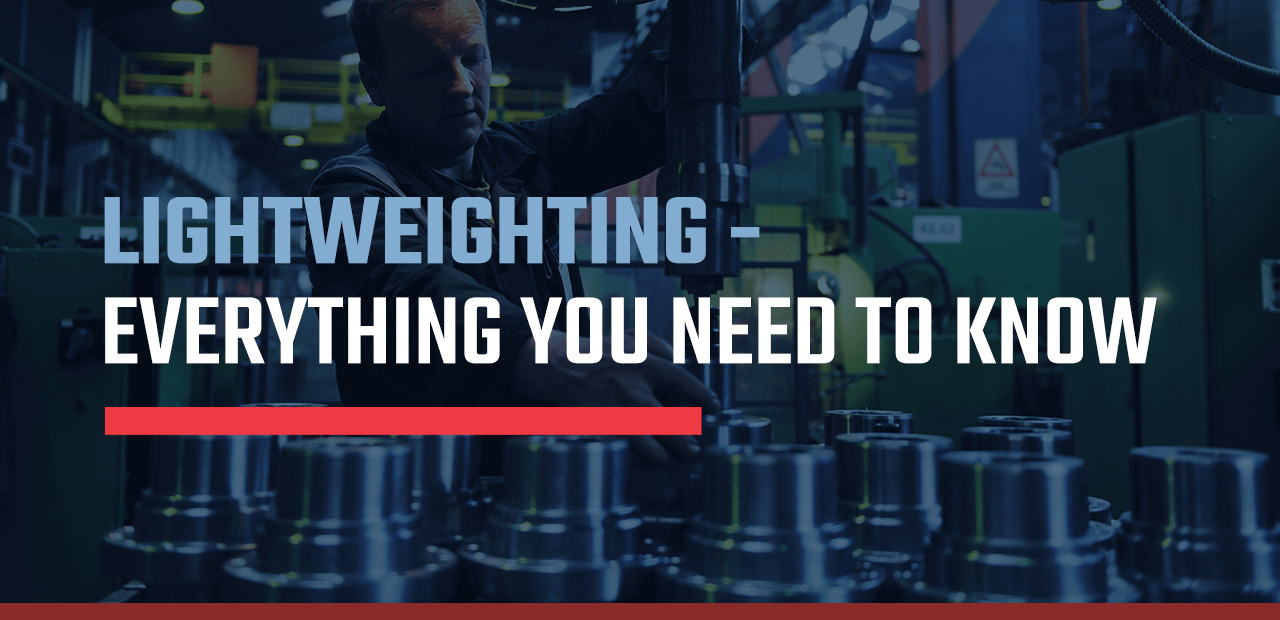
Manufacturers are constantly on the lookout for ways to produce materials that are more efficient, cost-effective and eco-friendly. To do so, they need to enhance the efficiency and price point of their products without sacrificing quality and function.
Lightweighting in manufacturing is a method many producers use for reducing weight and improving efficiency. It’s particularly common in the automotive industry and other manufacturing sectors where component weight is a key factor. Learn more about how it works.
What Is Lightweighting?
Lightweighting removes weight from a component. There are several ways a designer or manufacturer can reduce a part’s weight.
- Material substitution: Material substitution is the most common way to lightweight a component. Here, a manufacturer swaps out a heavier material for one that has less density or weight, choosing a lighter-weight material that is as strong, if not stronger, than the original. Examples of lightweight materials that are appropriate for substitution include aluminum, plastics or conductive ceramics. Other options include using low-density foam. Which substitute material is most appropriate will depend on the nature of the parts and their functions.
- Material elimination: Another option is to remove materials or mass from a component. As manufacturing evolves, companies explore ways to minimize the mass of a part while maintaining its safety and structural integrity.
- Design improvements: Identifying design improvements is an excellent way to reduce the weight of a part or assembly. Improving a component’s design is often performed alongside material substitution or elimination.
Lightweighting isn’t a new concept. The automotive industry has been using lightweighting to look for ways to reduce weight and costs since the beginning, with aluminum body panels appearing in vehicles as far back as 1909.
While lightweighting has long been used in the automotive and aerospace industries, it has applications in many others, including:
- Medical
- Consumer electronics
- Consumer goods
- Construction
- Agriculture
Materials Used in Lightweighting
The materials used to perform lightweighting depend in large part on the component type and the industry. Some of the most common materials include:
- Aluminum: Aluminum is one of the most abundant elements on Earth. It’s also considerably lighter in weight than other metals, such as iron, and is incredibly durable. Unlike iron, aluminum is naturally rust-resistant, so it’s more resilient against corrosion when exposed to moisture. It’s also readily recyclable, making it an environmentally conscious choice.
- Plastic: Depending on the application, some metals can be replaced by plastics, particularly thinner types made from composite materials.
- Foam: Manufacturers are increasingly turning to foam to replace heavier insulating materials such as fiberglass.
- Gels: In consumer electronics, gels that manage heat and protect against impact can replace heavier polyimides.
Benefits of Lightweighting
No matter the industry, lightweighting offers multiple benefits to manufacturers and consumers. Whether used in the construction of a vehicle or in the design and build of a home, some of the benefits of lightweighting are as follows:
- Reduced fuel use: Whether on land or in the air, lighter vehicles need less fuel. Reducing a car’s weight by 10% leads to an improvement in fuel economy of up to 8%. Reducing a plane’s weight by 20% yields up to 12% greater fuel efficiency. Having lower fuel requirements translates to monetary savings and lower resource use.
- Greater comfort: Utilizing lightweighting on products tends to make them more comfortable to use and manipulate than heavier items, as a lower product weight significantly reduces the likelihood of user fatigue. A tennis racket made from a lightweight composite is easier to swing and grip. Medical devices made from lightweight materials are easier for users to weigh or move around.
- Reduced manufacturing costs: Material prices contribute a significant amount toward the overall cost of a product. Typically, using lighter-weight materials translates to needing less of those goods during manufacturing, reducing overall costs. Manufacturers can then pass those savings on to the consumer, making the product more attractive.
- Lower shipping costs: Lightweighting can also mean reduced transportation and shipping costs. As shipping companies often charge by weight, a lighter container or package will naturally cost less to ship. Reducing shipping weight also reduces the fuel needed to transport products, whether by boat, plane or truck, making lighter products the more eco-friendly choice.
- Improved function: Lightweighting leads to better products. With lightweight materials, automotive manufacturers can build larger cars that are more comfortable to drive or ride in without having to sacrifice the vehicle’s performance or fuel economy. The makers of sporting equipment or medical devices can produce more ergonomic devices or equipment thanks to materials that allow better shaping without adding weight. When used in the manufacture of farming equipment, lightweighting can lead to greater yields by minimizing soil compaction for better air and water penetration.
- Better performance: Reduced weight often leads to better performance. When a car weighs less, its tires can gain more traction on the road, reducing the risk of slips and sliding. Lightweight vehicles also cause less wear and tear on brake pads, extending the life span of these components.
- Eco-friendliness: Government regulations often affect the design choices manufacturers make, as do consumer expectations. Today’s consumers are typically ecologically conscious and seek out products made with sustainable practices and a small eco-footprint. Since lightweighting leads to better fuel economy and reduced material use and typically involves reusable or recyclable materials, it allows manufacturers to meet consumer expectations while adhering to environmental regulations.
Learn More About Warner Brothers Foundry Automotive Services
Warner Brothers Foundry provides aluminum casting services to automotive manufacturers throughout Michigan. We can help you produce lighter-weight, more fuel-efficient vehicles. Contact us today to learn more about our services.


